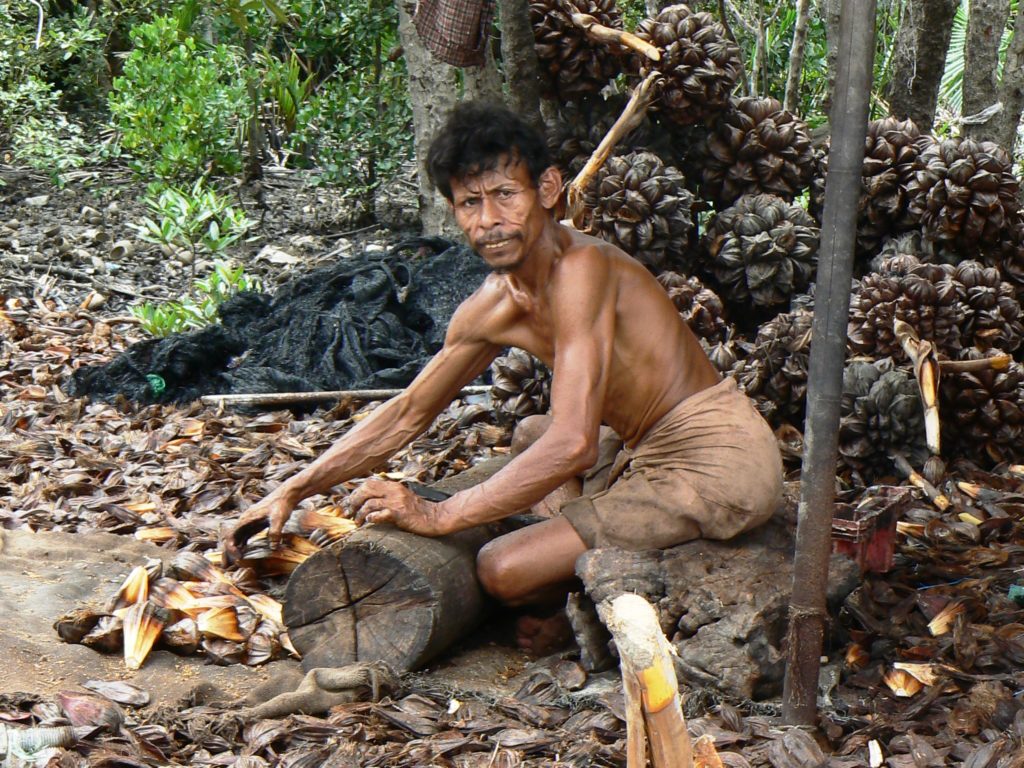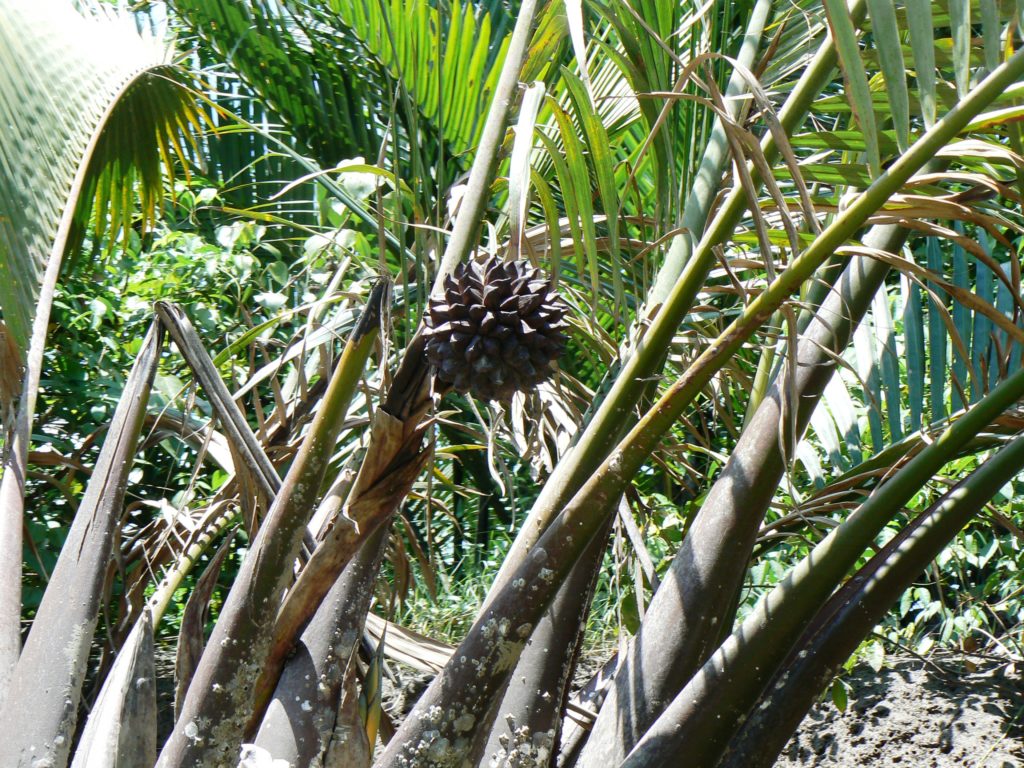Nipa palms (Nypa fruticans) are a species of palms especially adapted to muddy environments of slow-moving tidal waters and mangrove forests. They occur in Asia-Pacific tropical climates. Nipa palm fruits are delicious to eat. Both the fruits and wooden parts float in water, which facilitates the distribution of its nuts and can be utilized for floating devices.

The endosperm within the kernel, the sap of the flowering stem, and young shoots can be used for human consumption. In this post, we will focus on the kernel.
Nipa palm fruits
Throughout the year, there is no specific time when fruit-bunches are getting ripe. It happens individually and differently on every palm tree. Maybe the expression ‘palm tree’ is a bit confusing, as Nipa palms only develop rhizomes underground from which bunches of humongous palm fronds develop. The scientific second name ‘fruticans’ means ‘shrubby’ in Latin.
Harvesting of Nipa palm fruit bunches

For harvesting the bunches, locals get as close as possible to the fruit-bearing palm by boat and, after that, wad through thick, soft mud to the palm and hack down the bunch when ripe. A ripe bunch is brownish-black and has a diameter of about 40 cm. It consists of various single fruits, each about 10-15 cm long and 6-8 cm wide. On top of each fruit is a heavy spike, forming a well-defended round bundle of fruit. Due to its heavy weight, spiky outside, and difficulty getting a secure stand on one of the fronds when harvesting these bundles, this job is not easy.
Detaching single Nipa palm fruits from the bunch

After harvesting, the fruit bundles can be stored for many weeks without deteriorating. To detach a single fruit from a ripe bunch, the raw force has to be used to detach a small number of fruits, and after that, it is easy to take out all others. ‘Raw force’ for the first opening means that the person takes a machete and hacks with full force on the lower rounding of the bundle tangentially into the top of fruits until some of them are getting loosed. The upper part of single fruits with the spine is tough; therefore, the machete blade’s upper (and blunter) part should be used for this job. The top part of the machete should be as heavy as possible but still be convenient to handle.
Opening of Nipa palm kernel
After separating each fruit, it has to be cut in the middle so that the kernel is fully split and the two fruit halves can be fully opened but are still connected. For this job, the machete blade’s lower (and sharper) part is used.
Nipa palm flesh inside the kernel
The kernel is opened now, and the endosperm in each halved kernel can be scooped out and eaten with a spoon or similar tool. I would estimate this ‘fruit flesh’ size to be about 3 x 4 cm and about 3 mm thick. The endosperm is whitish-translucent in color, soft, sweet, and tastes very similar to green coconut flesh. It’s therefore also commonly called ‘Water coconut’.
In addition to being eaten fresh, the endosperm is preserved in syrup and is often enjoyed in combination with ice cream or similar cold desserts.
Lessons learned about Nipa palm fruits
- Nipa palm fruits are available the whole year over.
- It is hard work to harvest Nipa palm fruit bunches.
- A particular type of machete is required to open fruit bunches and fruit.
- Nipa endosperm has a delicious taste.
.




